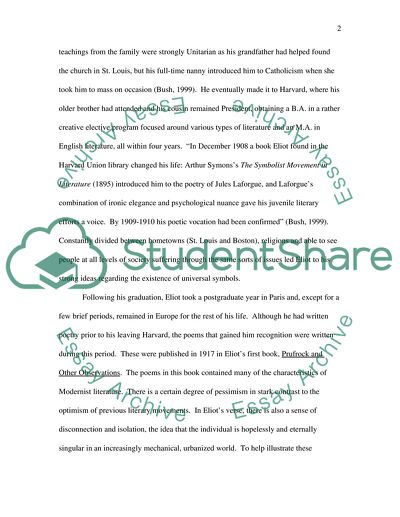Cite this document
(“T.S. Eliot And The Objective Correlative Essay Example | Topics and Well Written Essays - 2500 words”, n.d.)
Retrieved from https://studentshare.org/literature/1537303-ts-eliot-and-the-objective-correlative
Retrieved from https://studentshare.org/literature/1537303-ts-eliot-and-the-objective-correlative
(T.S. Eliot And The Objective Correlative Essay Example | Topics and Well Written Essays - 2500 Words)
https://studentshare.org/literature/1537303-ts-eliot-and-the-objective-correlative.
https://studentshare.org/literature/1537303-ts-eliot-and-the-objective-correlative.
“T.S. Eliot And The Objective Correlative Essay Example | Topics and Well Written Essays - 2500 Words”, n.d. https://studentshare.org/literature/1537303-ts-eliot-and-the-objective-correlative.


